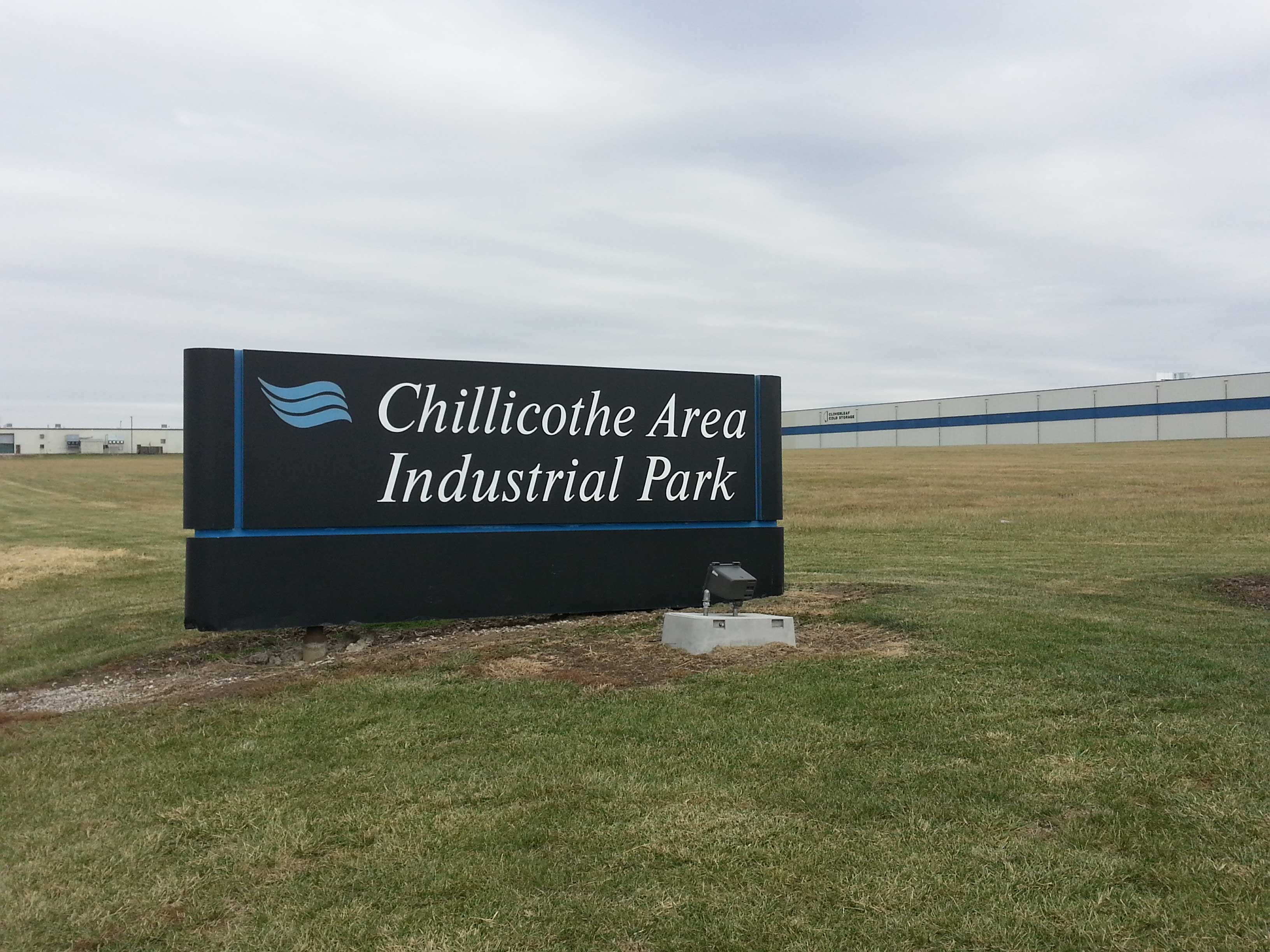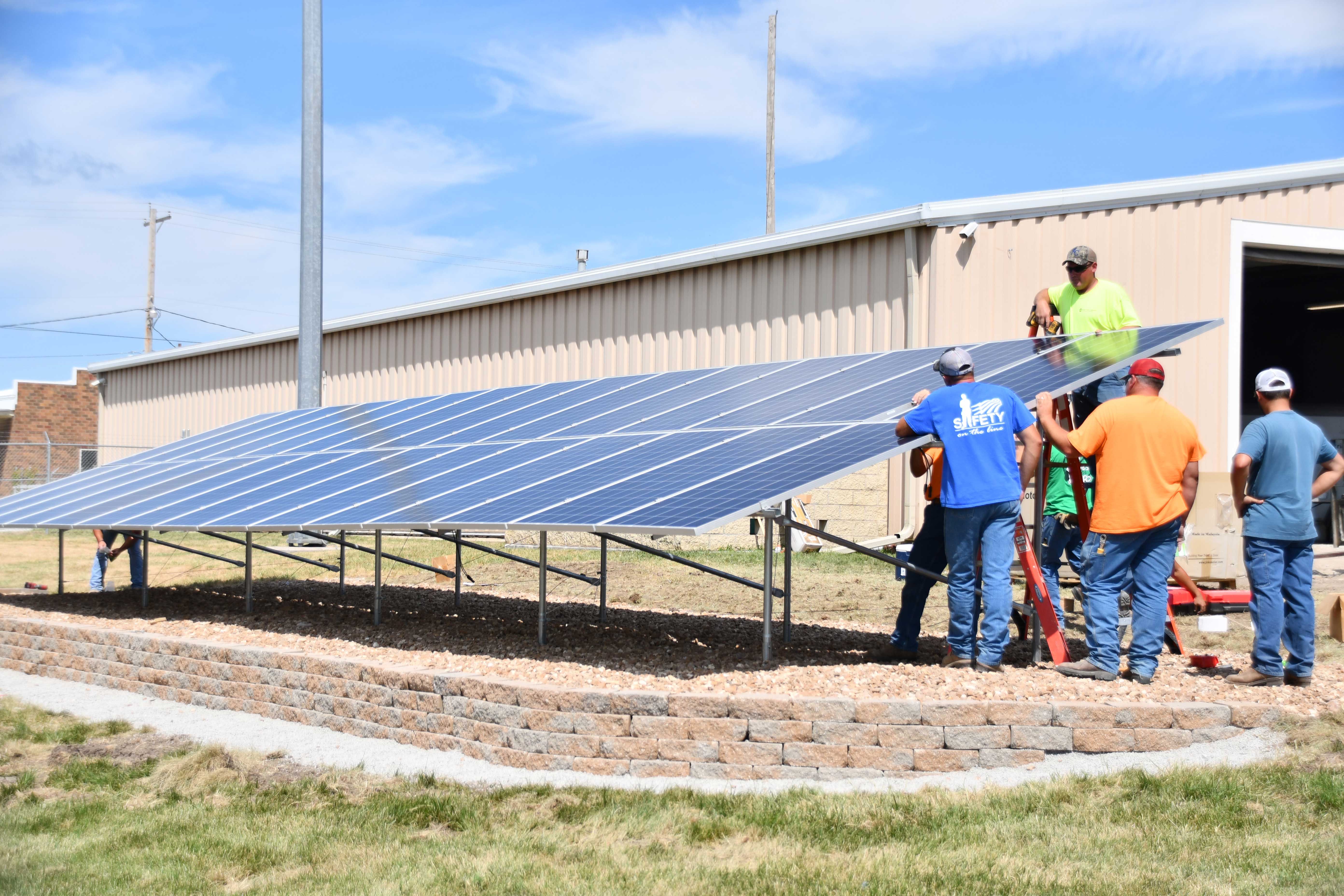Farmers' Electric Cooperative's History
April Fool's!
"I thought it was an April Fool's joke and I chased him off with a broom," stated Mrs. U. M. Babb as she recalled the arrival of electricity to her farm home. This was April 1, 1940, and the Babbs were the first Members to receive electricity from Farmers' Electric Cooperative. The Babbs lived just east of Chillicothe. Bringing electricity to the Babb family was the culmination and the beginning of the effort that would bring this life-changing service to rural locations in Livingston, Caldwell, Daviess, Ray, Carroll, Linn, Chariton, Dekalb, and Clinton Counties. It all had begun in 1935 with the founding of the Rural Electrification Administration, better known as The REA.
REA Signed
Championed by Nebraska Senator George Norris and Texas Representative Sam Rayburn, the Rural Electrification Act was signed into law by Farmers' Electric Co-op's first REA truckPresident Franklin D. Roosevelt. Then on September 2, 1938, a determined group of twelve farmers, including Ernest C. Wood, incorporated Farmers Electric Cooperative. Wood then became the first general manager and the cooperative's first office was opened in Hamilton, Missouri. The following June, the cooperative's office was moved to Chillicothe. The entire office, including equipment and paperwork, was moved to Chillicothe in the back of a single pickup truck.
The growth of Farmers' Electric can be attributed to three areas: The many people who resided in rural areas who wanted the advantages of electrical power; the energetic Cooperative employees who traveled the miles and miles of dirt and gravel roads signing up new Members; and, the guidance of the University of Missouri's County Extension Agents. The Extension Agents worked alongside Cooperative employees, scheduling meetings and talking to people in the countryside. The university's agents knew that electricity in the rural areas would make work and life easier and they actively pursued this opportunity.
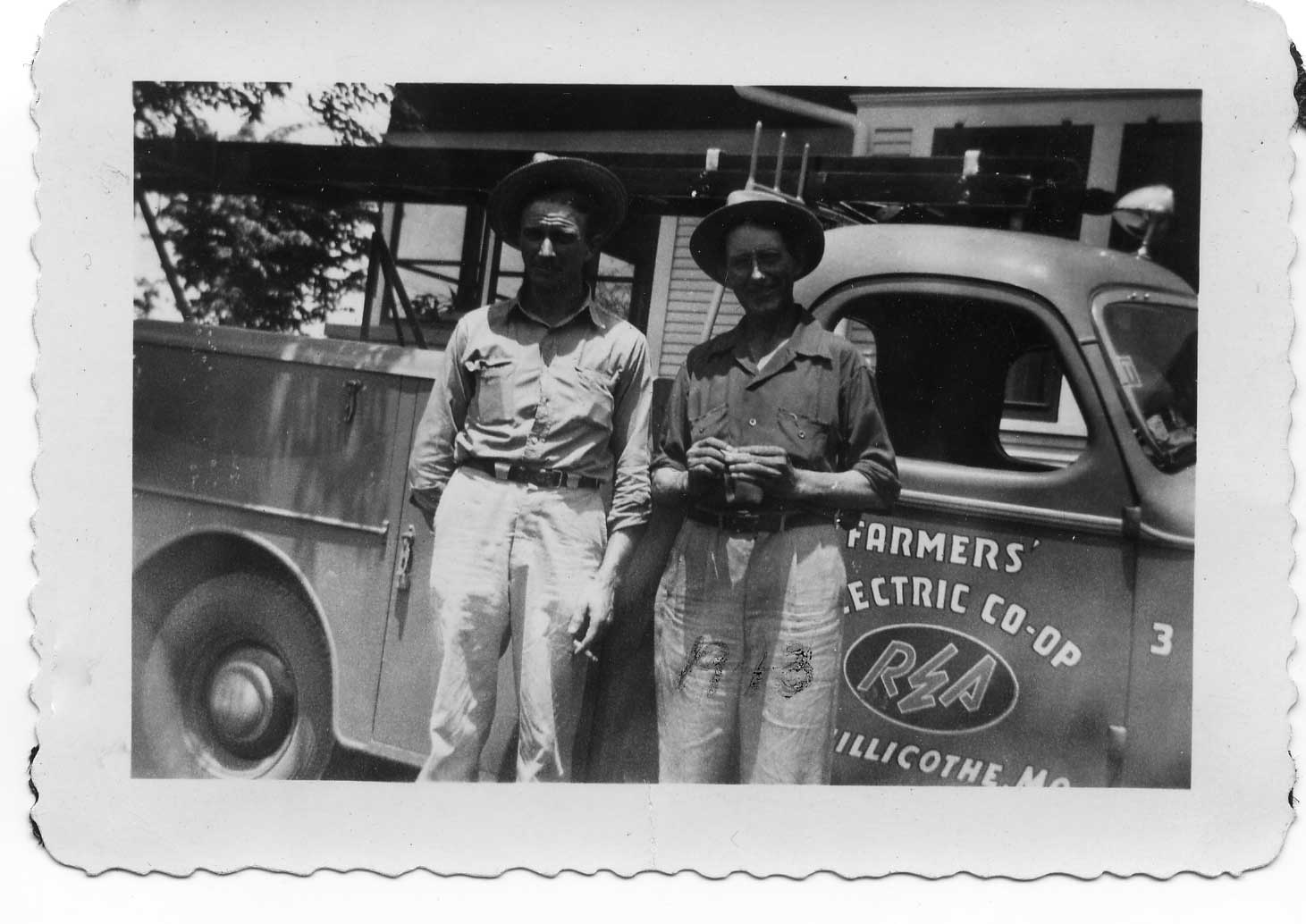
REA Loan
The first REA loan to Farmers' Electric was issued in February 1939. It totaled $505,000. Construction of the Cooperative's first power lines began that summer. Twelve months later the Cooperative had 478 miles of distribution line and a total 792 Members. At the time Farmers' Electric purchased its electricity from the city of Chillicothe. The first power bill totaled $34.43 for the purchase of 2,700-kilowatt hours. "It was required that you have at least two farmers per mile signed up before you could build a line to them," recalled W. L. Altheide, who retired as general manager of Farmers' Electric in 1982. He had succeeded Wood in 1967 after serving as assistant manager for a number of years. "There were a number of areas that didn't qualify because there simply were not enough people living in those areas," Altheide said. "We had people using names off tombstones in some areas so they could get enough signatures to have electricity delivered to their farms."
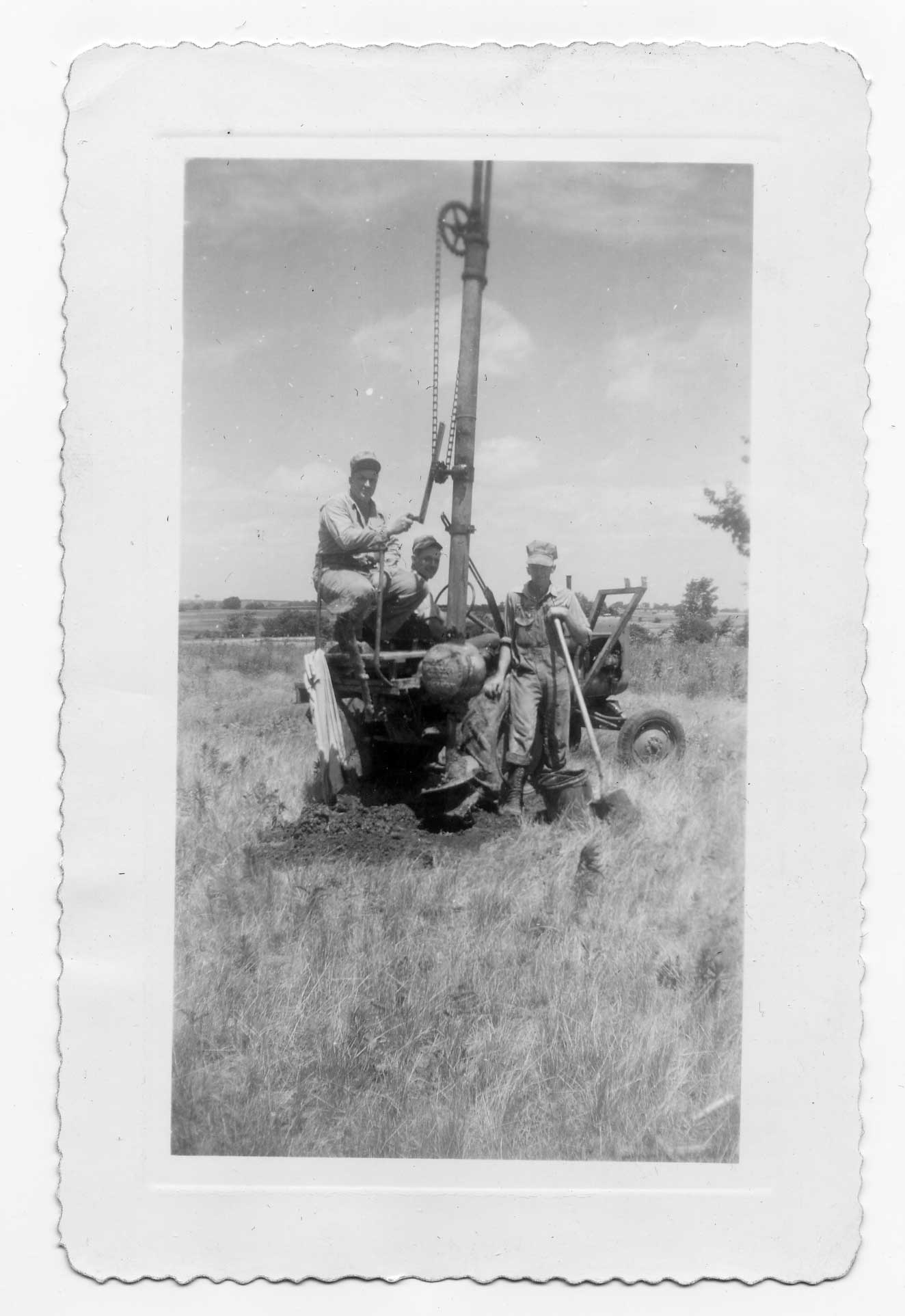

Cooperative Growth
The cooperative grew steadily until the beginning of World War II. Construction of new lines was difficult then because aluminum and copper were scarce. These materials were needed for the war effort. At one time there were over 100 miles of power poles in the ground in Daviess County without power lines attached. For an area to get the materials required to build the distribution lines to the farms there had to be so many "units" per mile. For example, one milk cow equaled one unit. Ten beef cattle equaled one unit. Units were also assigned to chickens and hogs, while fields of row crops didn't count. "If a farmer didn't have enough units to qualify for electricity, he would borrow some livestock from his neighbors to meet whatever the requirements were at the time," laughed Altheide. "They would drive herds all over to get the units they needed. That's how much they wanted electricity!" Altheide recalled that "Once the war ended we experienced an amazing growth period. We couldn't keep up with the requests for electricity."
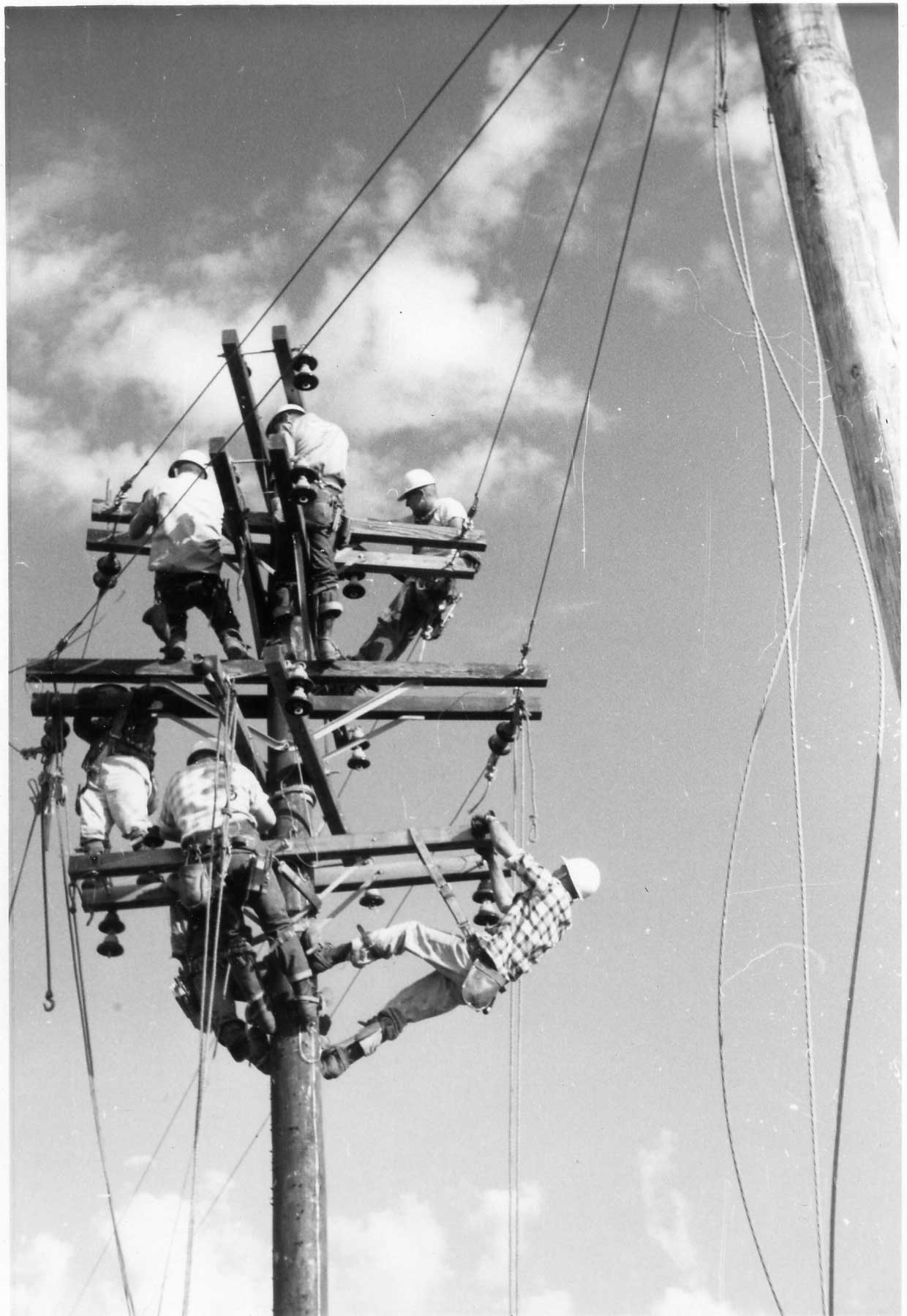
New Office Building
The steady growth continued into the early 1950's. As the distribution system grew so did a need for a new facility. Construction on the present office building began in the fall of 1952. On May 2, 1953, the new office, located on Business Highway 36 East, opened for business.
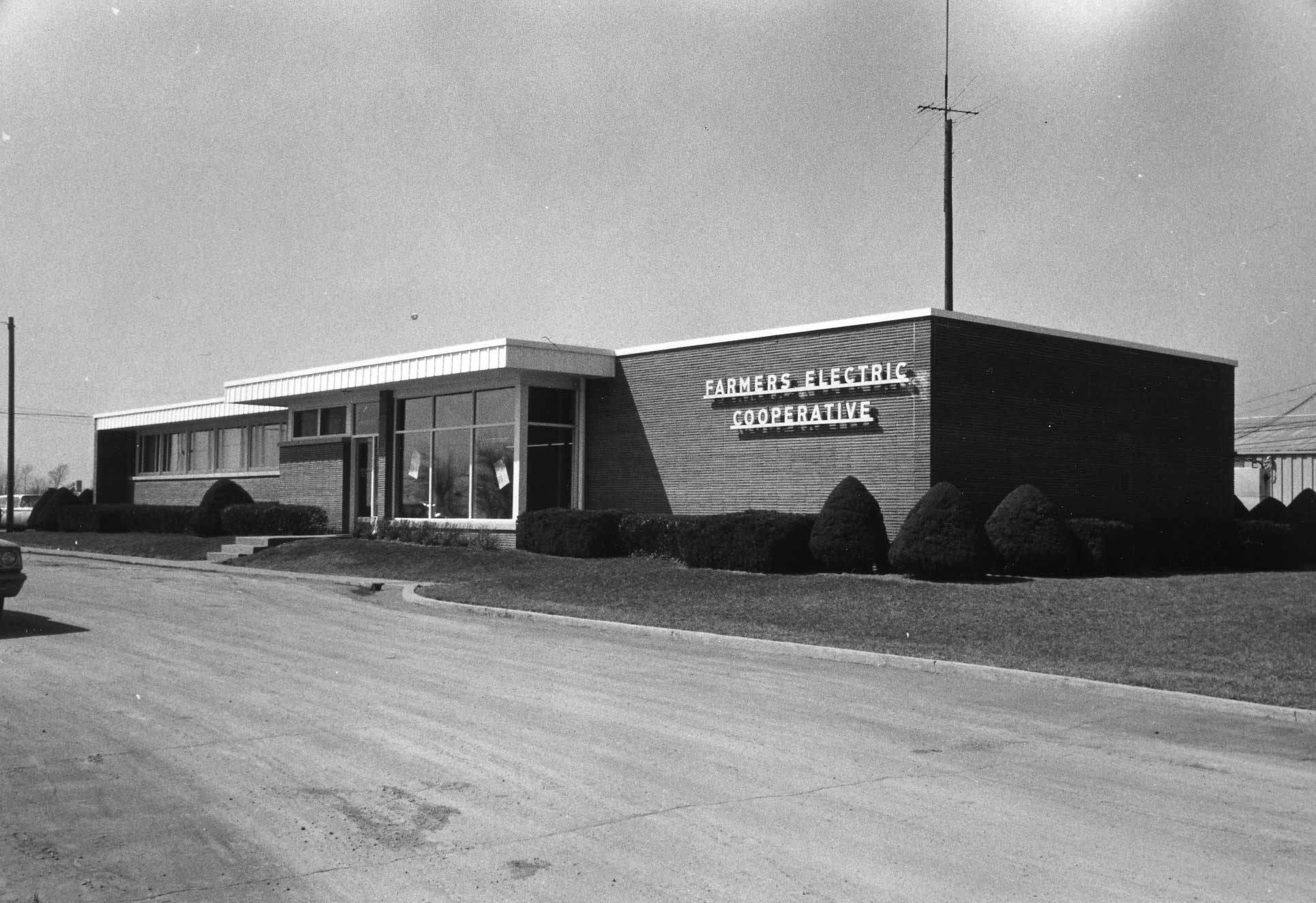
Continued Cooperative Growth
By the 1960's growth had slowed because, for the most part, those who wanted electricity now were receiving this service. Farmers' Electric did grow in numbers during this era by purchasing several independent systems, including a farmer-owned line on the western edge of Chillicothe that ran to the old Campbell Country Club, now the Grand Oaks Baptist Assembly. The largest acquisition for the Cooperative occurred in 1964 when Farmers' Electric purchased the Consumer Public Service Company. This purchase included the areas around Sumner, Mendon, Meadville, Laclede, Hale, Wheeling, and Rothville. The majority of the purchase involved customers in Linn County. Remembering the work involved in this acquisition, Altheide said, "It took 32 pounds of paperwork for us to justify the purchase of the Consumer Public Service Company to the federal government." He added, "We took hundreds of photographs and when it was finally over it took almost a year to complete the transaction." Ironically, part of the area obtained in this purchase was involved in a trade with Union Electric in the late 1990's.
In the mid- 1960's the Cooperative also secured the exclusive rights to provide electric service to Lake Viking, located northwest of Gallatin. The service area of Farmers' Electric Cooperative did not change much after the 1960's until 1989.
Industrial Growth
The third manager in the Cooperative's history, Dan Bryan, came to Farmers' Electric at the beginning of 1982. Later that year the Cooperative became one of the first REC's in Missouri to initiate the use of interruptible power contracts with major industrial concerns within its service area. This provided the Cooperative with an avenue to prevent potential peaking situations and, in turn, aid in the control of its rate structure. "These interruptible contracts have worked extremely well for us and they have opened new doors for expanded opportunities for our industrial customers," Bryan said in 1988.
On July 5, 1989, Missouri Governor John Ashcroft signed a bill allowing neighboring electric utilities to agree on service boundaries. The first agreement in the state was signed on October 9, 1989. This provided territorial integrity for the City of Chillicothe and Farmers' Electric Cooperative. Dignitaries from the State of Missouri as well as national figures were present for the signing ceremonies. With the signing of this agreement, the Cooperative announced its intentions to purchase a 176-acre tract of land and establish an industrial park. Recognizing the need to help boost the area's economy, the Cooperative dedicated itself to bringing jobs to its service area.
Chillicothe Industrial Park
The first tenant in the industrial park was American Nail. Although this small industry never became a major employer it did provide avenues to help build the park's infrastructure. In 1993 Wire Rope Corporation of America opened an expansion plant in the park. Since purchasing 175 acres of undeveloped land in 1988, FEC Development has attracted businesses and industries to the CAIP that have created over 400 new jobs for area residents. Government offices include the Social Security Administration office and the USDA Service Center.
A second Industrial Park was added near Gallatin after the Cooperative and the City of Gallatin had also established a territorial agreement. In 2014, the last of the remaining lots were sold.
FEC Services
Improving the quality of life for the Cooperative's Members has been one of its primary goals from the time Farmers' Electric was established. In 1987 the Cooperative become one of the first in the nation to create a wholly owned subsidiary. The Rural America Service Company (RASCO) began to provide programming for C-band satellite dishes. Within a few years, RASCO had over 3,000 rural customers and was the third largest provider of this programming in the nation.
Later the subsidiary's name was changed to FEC Services and its range of business expanded to provide other services designed to improve the quality of life for the residents in the nine-county area served by the Cooperative. In April 2009, FEC Services halted its DISH Network services, and in 2010, the Dairy Queen and Fuel Expresso businesses were also sold. Sale of the Culligan Water franchise was announced on December 30, 2010.

Youth Programs
Farmers' Electric Cooperative has always believed in the youth of the nation and has worked diligently to provide opportunities for young people living in rural Missouri. The Cooperative has participated in the Rural Electric Youth Tour for many years sending high school juniors to participate in the National Rural Electric Cooperative Association's Youth Tour to Washington, D. C. Farmers' Electric also sends high school sophomores to the Cooperative Youth Conference & Leadership Experience (C.Y.C.L.E.) where students visit our Missouri State Capitol.
In 1987, the Cooperative donated a C-band satellite to each school district so all schools could have access to specialized educational programming available from various colleges and institutions. The Cooperative's Partners in Education (PIE) program is still going strong. Partnerships with seven area school districts allow for a Co-op representative to go into the classrooms of fourth and fifth-grade school children and teach about electrical safety, energy efficiency, explain the Cooperative business model, what electricity is and how the electrical system works.
Emergency Responder Electrical Safety Program
Electrical safety programs aren't just for children, Farmers' Electric Cooperative began offering an annual Emergency Responder Electrical Safety Program in 2013. This program is designed to educate firefighters, first responders, EMT's and law enforcement about the dangers of high-voltage power lines with the goal of providing knowledge to avoid electrical contacts and to work safely around electricity.
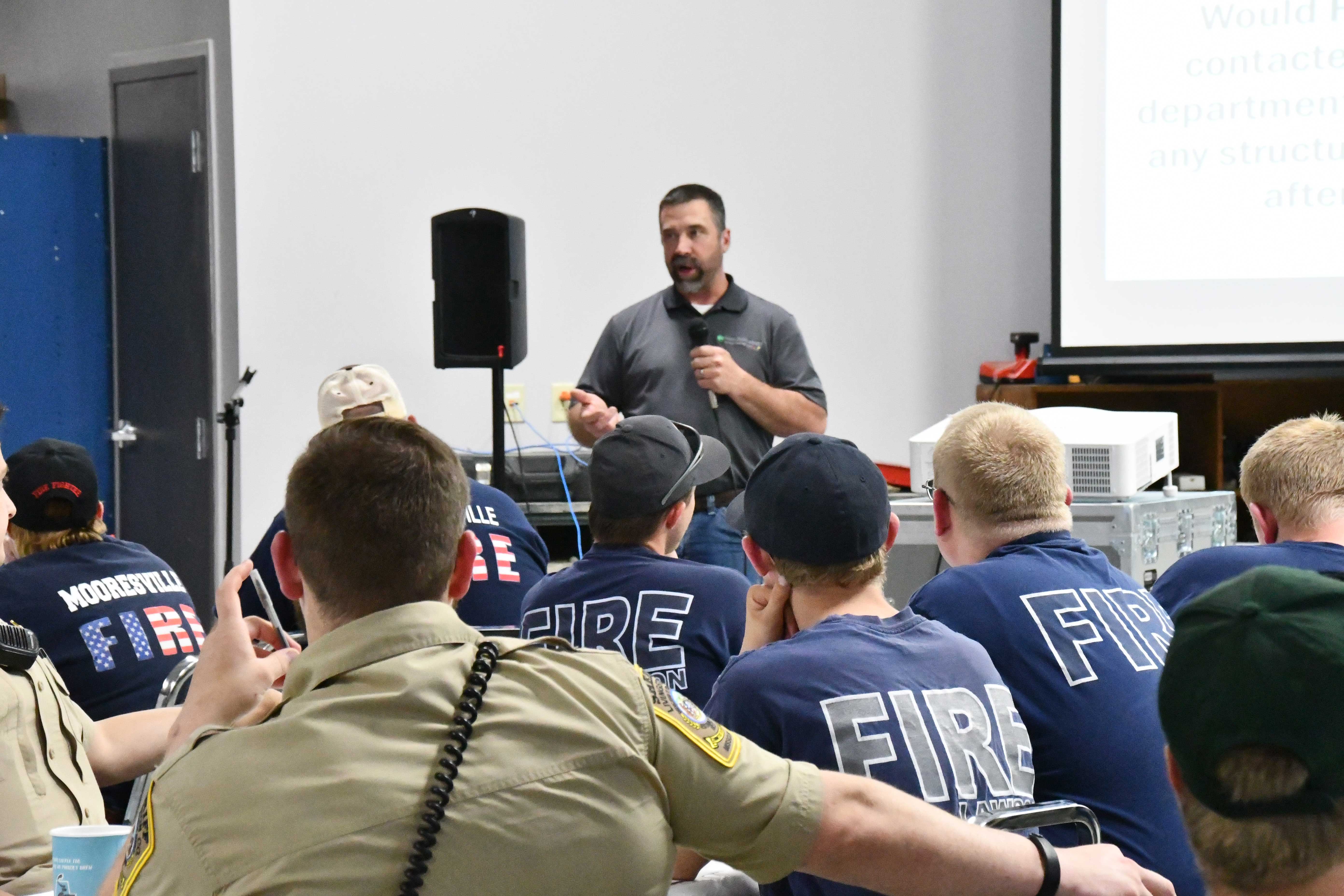
Area Youth Benefit Fund
The Farmers' Electric's Area Youth Benefit Fund (AYBF), a 501(c)3 charity, was established by the Cooperative in 1993. With this local charity designed to help area families with health care costs for their children 18 years of age and under, the Cooperative reached out to every corner of its service area. With the establishment of the AYBF, the Cooperative became one of the very first businesses anywhere to have its own charity supported by the public. Funding for the AYBF came through auctions of celebrity memorabilia and donated items from area merchants and individuals. Throughout its existence, over $1,021,000 has been distributed to 1,283 area families living in the Cooperative's ten-county service area to assist with health care.
Touchstone Energy
Early 1998 found Farmers' Electric stepping up to become one of the first cooperatives in the state to join with sister cooperatives across the nation in affiliating with Touchstone Energy. This national brand is a symbol of quality service to all customers.

Associated Electric Cooperative, Inc.
A reliable and economical source of electric energy has always been the goal of Farmers' Electric Cooperative. Early in their existence the distribution cooperatives in the state exhibited great foresight and formed transmission cooperatives. In 1961 these transmission cooperatives created Associated Electric Cooperative, Inc. AECI is a generation and transmission cooperative and now owns coal-fired generation stations at Thomas Hill and New Madrid. In addition, AECI now has internal combustion generation at several locations in Missouri and Oklahoma. In 2007, AECI signed its first long-term power purchase agreement with a utility-scale wind farm. Since, the generation cooperative has added six additional long-term power purchase agreements with utility-scale wind farms in northwest Missouri, Oklahoma, and Kansas. The efforts of AECI have resulted in low cost, reliable electricity for most of the rural electric cooperative Members in the State of Missouri.

New Technology
With the constant change in technology, the Cooperative now installs meters throughout the service area that can be read and analyzed from the office. Along with technology upgrades, the entire service area map is digitally inventoried and updated on a daily basis which cuts down on printing new map books each year and ensures the service map is up-to-date with constant changes to the system. It also increases efficiency in call response, as crews know what equipment they need before responding.
Office and Warehouse Renovation
The office building, which has remained in the same location since 1953, received a safety and security renovation in 2017. Also in 2017, the construction of a new warehouse in Chillicothe began. Two smaller buildings were torn down that had been utilized since 1957 and 1974 to make room for a warehouse big enough to house all trucks and equipment under one roof and easier to access during emergency outages.
In 2020, ground broke for a new warehouse near Hamilton. The new location provides a larger facility for storing more materials and trucks as well as close access to U.S. Highway 36 allowing more efficient service to our Members.
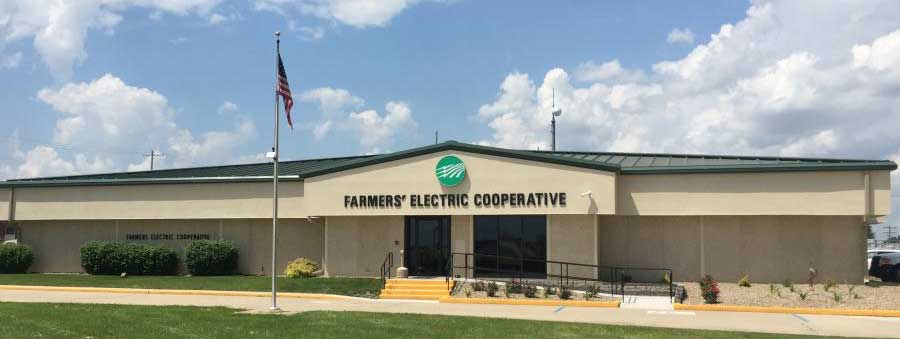
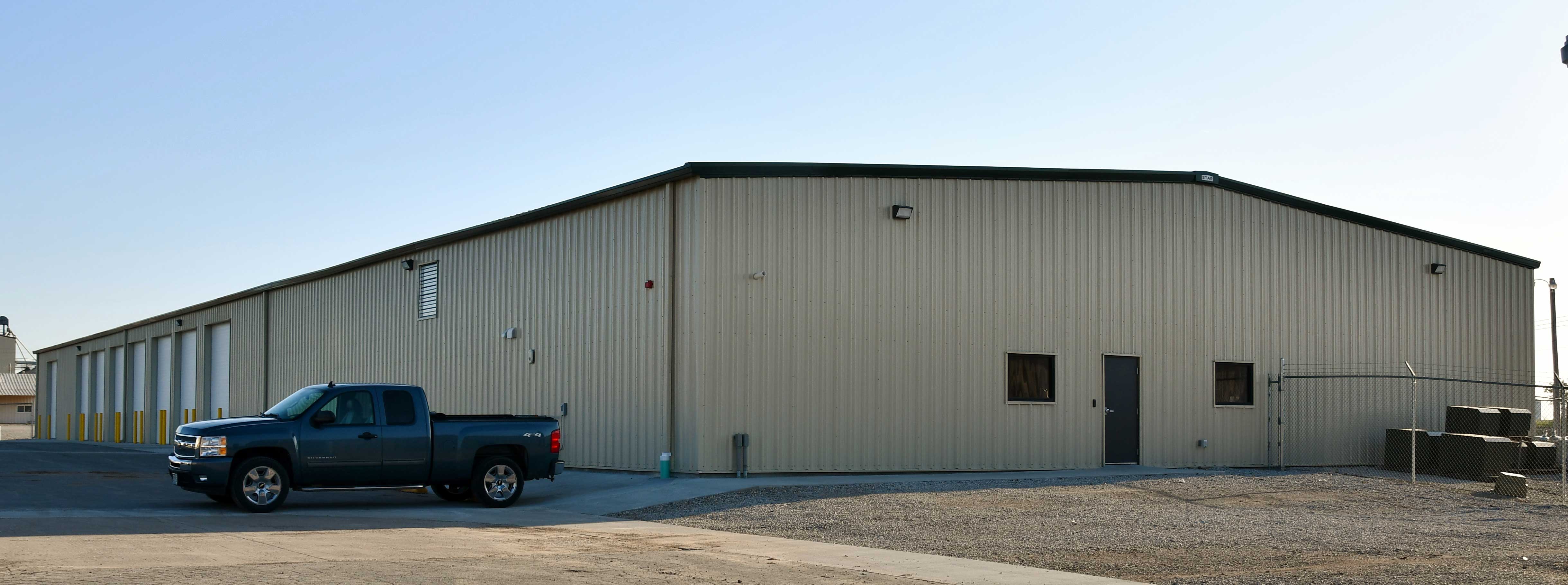
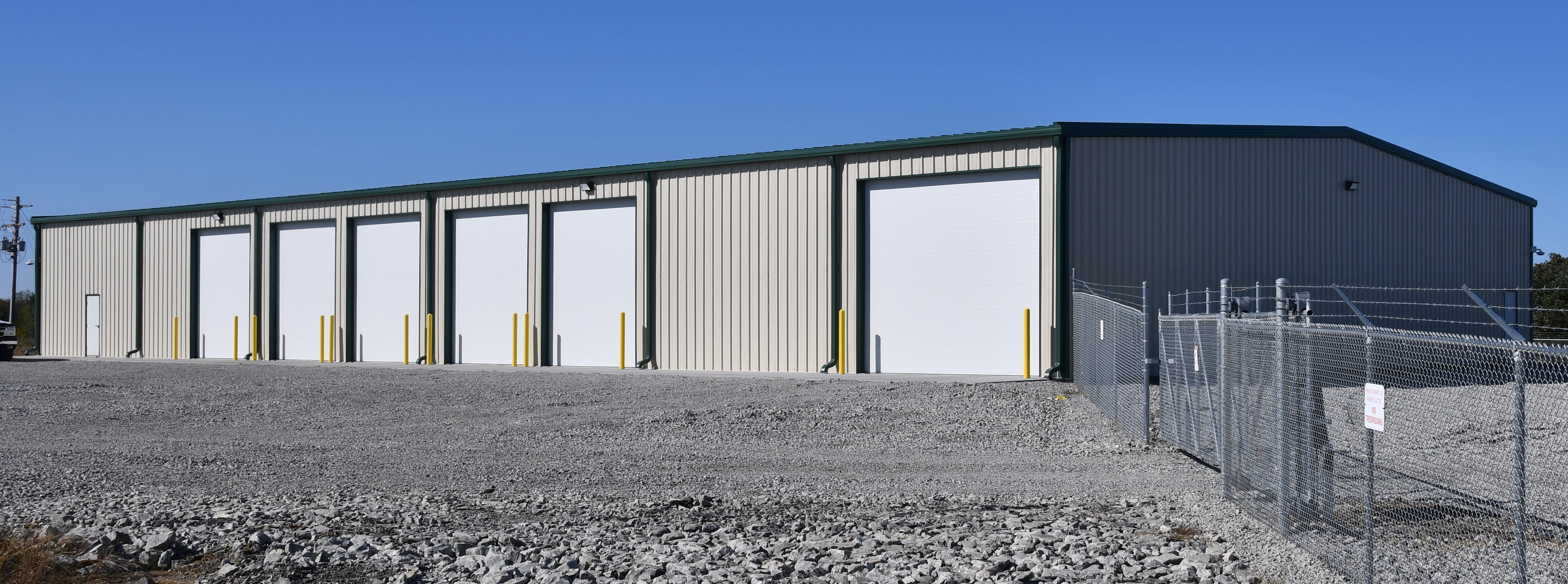
Solar 101 Demonstration Project
Farmers’ Electric Cooperative completed the installation of a 9.75 kW/DC, ground-mount solar array located behind the business office in Chillicothe in August 2018. The demonstration project positions the Cooperative as a direct source of information about this developing form of renewable energy for both our employees and our Members.
Farmers' applied for a Rural Energy for America Program (REAP) grant to help with the cost of the solar array. The Cooperative was awarded $6,335 from the grant program which provides guaranteed loan financing and grant funding to agricultural producers and rural small businesses for renewable energy systems or to make energy efficiency improvements. Farmers' previously received a REAP grant for our LED lighting project in 2015.
Capital Credits
Farmers' Electric Cooperative has a strong belief that the Members should share in the benefits of the operation of the business. Each year the board of directors reviews the capital credit picture and, historically, authorizes payments of capital credits. Through the year 2024, the Cooperative has returned more than $31,500,000 to the Members.
In the years to come, the Cooperative will be increasing its services through improved technology and a wider range of choices. Farmers' Electric Cooperative has always been and will continue to be committed to its Members and the communities where these Members live.
Seven Cooperative Principles
A whiteboard animation project for the National Rural Electric Cooperative Association (NRECA) telling "The Electric Cooperative Story".
Voluntary and Open Membership
Cooperatives are voluntary organizations, open to all persons able to use their services and willing to accept the responsibilities of membership, without gender, social, racial, political or religious discrimination.
Democratic Member Control
Cooperatives are democratic organizations controlled by their members, who actively participate in setting policies and making decisions. The elected representatives are accountable to the membership. In primary cooperatives, members have equal voting rights (one member, one vote) and cooperatives at other levels are organized in a democratic manner.
Members’ Economic Participation
Members contribute equitably to, and democratically control, the capital of their cooperative. At least part of that capital is usually the common property of the cooperative. Members usually receive limited compensation, if any, on capital subscribed as a condition of membership. Members allocate surpluses for any or all of the following purposes: developing the cooperative, possibly by setting up reserves, part of which at least would be indivisible; benefiting members in proportion to their transactions with the cooperative; and supporting other activities approved by the membership.
Autonomy and Independence
Cooperatives are autonomous, self-help organizations controlled by their members. If they enter into agreements with other organizations, including governments, or raise capital from external sources, they do so on terms that ensure democratic control by their members and maintain their cooperative autonomy.
Education, Training, and Information
Cooperatives provide education and training for their members, elected representatives, managers and employees so they can contribute effectively to the development of their cooperatives. They inform the general public, particularly young people and opinion leaders, about the nature and benefits of cooperation.
Cooperation Among Cooperatives
Cooperatives serve their members most effectively and strengthen the cooperative movement by working together through local, national, regional and international structures.
Concern for Community
While focusing on member needs, cooperatives work for the sustainable development of their communities through policies accepted by their members.

